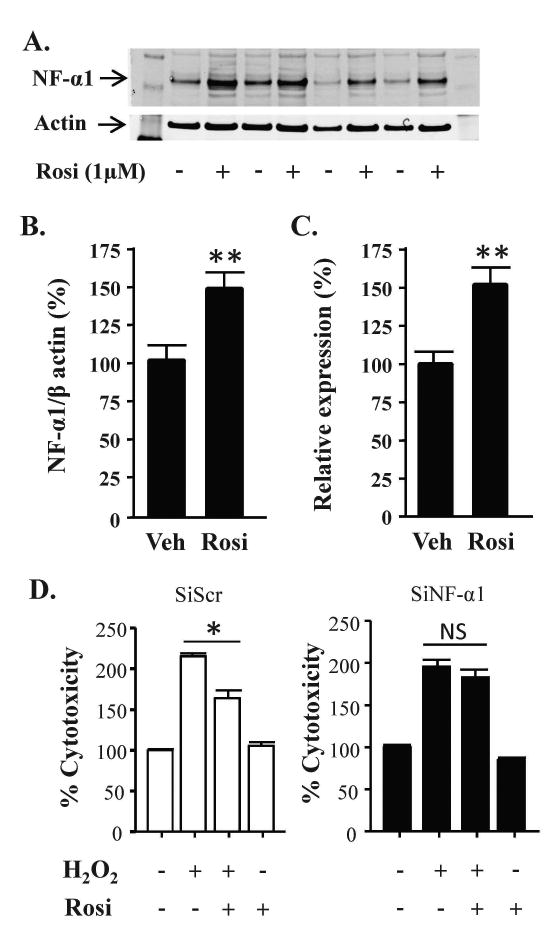Figure 4.

Rosiglitazone protects hippocampal neurons in an NF-α1-dependent manner. (A) Representative Western blots and (B) quantification of NF-α1 protein levels in hippocampal neurons treated with vehicle or 1 μM rosiglitazone (Rosi) for 48 h. Actin served as an internal control. n = 8/group; values are mean ±SEM, **p<0.01, Mann-Whitney test. (C) Bar graphs showing NF-α1 mRNA levels in hippocampal neurons treated with vehicle (Veh) or 1 μM rosiglitazone (Rosi) for 24 h. n = 6/group; values are mean ±SEM, **p < 0.01, Mann-Whitney test. (D) Primary cultured hippocampal neurons were transfected with siScr or siNF-α1 for 24 h and then treated with 1 μM Rosi or vehicle for 24 h, then 50 μM H2O2 was added to the cells for a further 24 h. The LDH release assay showed Rosi inhibited H2O2 induced cell cytotoxicity in siScr treated neurons but not in siNF-α1 treated neurons. n=5/ group; values are mean ±SEM, one way ANOVA for siScr [treatment effect: F(3, 16)=93.69, p<0.001]; for siNF-α1 [treatment effect: F(3, 16)=78.54, p<0.001], followed by Tukey test. *p <0.05, H2O2 group compared to Rosi + H2O2 group.
